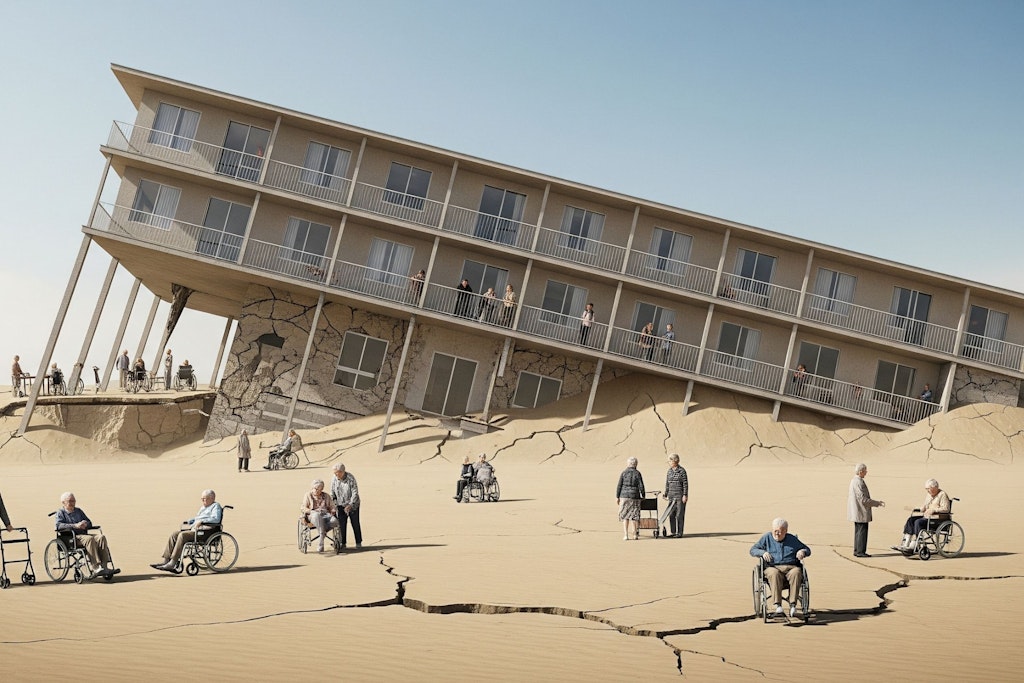The Aged Care Act is coming – but are we building on sand?
Last updated on 3 July 2025

With the new Aged Care Act now locked in for 1 November 2025, aged care leaders could be forgiven for feeling déjà vu.
Freshly appointed Minister for Aged Care and Seniors, Sam Rae, fronted ABC Radio Melbourne’s Care Squeeze special last week with confidence — promising 83,000 new Support at Home packages, a rights-based framework, and “no further delays.” But his firm stance has done little to soothe concerns from aged care providers, experts, or families who say we’re forging ahead with unresolved flaws.
From the troubled star rating system to uncertainty around assessment processes and the Act’s unfinished rules, Rae’s debut sounded all too familiar: a PR push wrapped in political optimism, but lacking policy depth.
A system “not up to scratch”
Listeners to the Care Squeeze broadcast didn’t hold back — calling the system “not good enough” and “leaving people in distress.” Yet Rae, echoing the deflection tactics of his predecessor Anika Wells, responded with stats: 24/7 nursing in 99% of homes and billions allocated to worker wages.
Meanwhile, families and experts continue to report inconsistent assessments, delayed packages, and a star rating system that’s failing the transparency test.
The Star Rating mirage
The star rating system — launched in 2022 to improve visibility on aged care quality — was supposed to empower families. But instead of clarity, it’s sown confusion and, at times, false confidence.
Cases like Wallsend Aged Care, which received a 5-star rating despite failing all eight quality standards, highlight the disconnect. As sector critic Dr Rodney Jilek bluntly put it: “It’s a joke.” Ratings often rely on self-reported data, lag by three months, and fail to reflect known breaches unless sanctions are imposed — a rare occurrence.
And while Rae insists that 74% of homes are now rated 4 or 5 stars (a 36% improvement since launch), the reality is that some of those stars mask serious, sometimes fatal, failings.
With $143.8 million spent on the system to date — including a $3.9 million ad campaign — critics are questioning whether the government has invested more in marketing than in fixing core issues.
Rights-Based Reform or Rhetoric?
The language of “rights-based care” is encouraging. But when real-world implementation still hinges on fragmented systems, workforce pressures, and incomplete legislative rules, it’s fair to ask: rights for whom, and backed by what?
Rae acknowledged the Royal Commission’s “distressing” findings but deflected concerns around assessment wait times, support for carers, and regional variability. And when pushed on carer payments — like the modest $200-a-fortnight allowance — he offered only a “shout out” to unpaid carers and passed the buck to Minister Plibersek.
This isn’t leadership. It’s political choreography.
What leaders should be asking
As we barrel toward the November deadline, aged care leaders must push beyond spin and ask hard questions:
- Are we truly ready? Or are we repeating a pattern of rushed reform without resourcing frontline delivery?
- Does the star rating system need urgent overhaul – or a complete replacement?
- Are new Support at Home packages designed for equitable, efficient rollout? Or will they exacerbate access gaps?
- Are we measuring reform by media hits or lived experience?
The Act’s potential is significant. But only if it’s built on trust, accuracy, and honest engagement – not deflection and optics.
As Rae said himself, “We’re trying to get as much care as possible to as many people as possible.” But if that care is inconsistently assessed, confusingly rated, or delayed by bureaucracy – then we’ve missed the point.
It’s time aged care leaders hold reform to a higher standard. The clock is ticking – and so is public confidence.